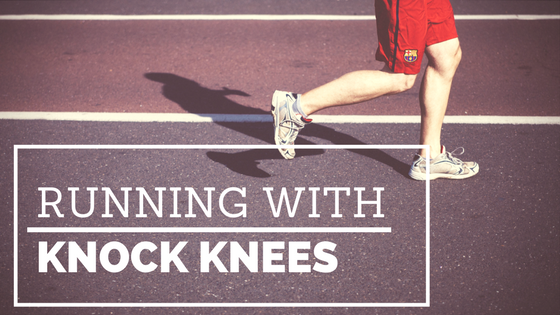
Do you feel your knees rubbing together when you run? Maybe you get little bruises on the inside of your knees? If so, you may be increasing your risk of developing knee pain with running. Read on to find out what is going on and what you can do to fix it.
Running with Knock Knees
Knock knees with running is actually a result of control problems at the hip and/or foot. Sometimes, increased pronation at the foot can result in the tibia (shin bone) being angled towards the other leg. This brings the knees closer together and results in the knock knees. However, this is less common than when the problem comes from the hip and pelvis.
Hip and Pelvis Control
When you land on one leg as you run, you will do a little “mini-squat” by bending your standing leg to absorb the impact. You can try this now by just standing on one leg and bending your knee a little. That is called a single leg squat and it’s a test I use in the clinic regularly.
Now, let’s repeat that single leg squat but this time, as you do the single leg squat, move your knee towards the middle (towards the other leg). You will notice that your hip on the standing leg pushes out a bit. You may also notice that the knee moves inwards and the thigh rotates medially (inwards).
This combination of movements is called dynamic knee valgus and that is the movement that knocks the knees together. You can see a demonstration of dynamic knee valgus in the image below.
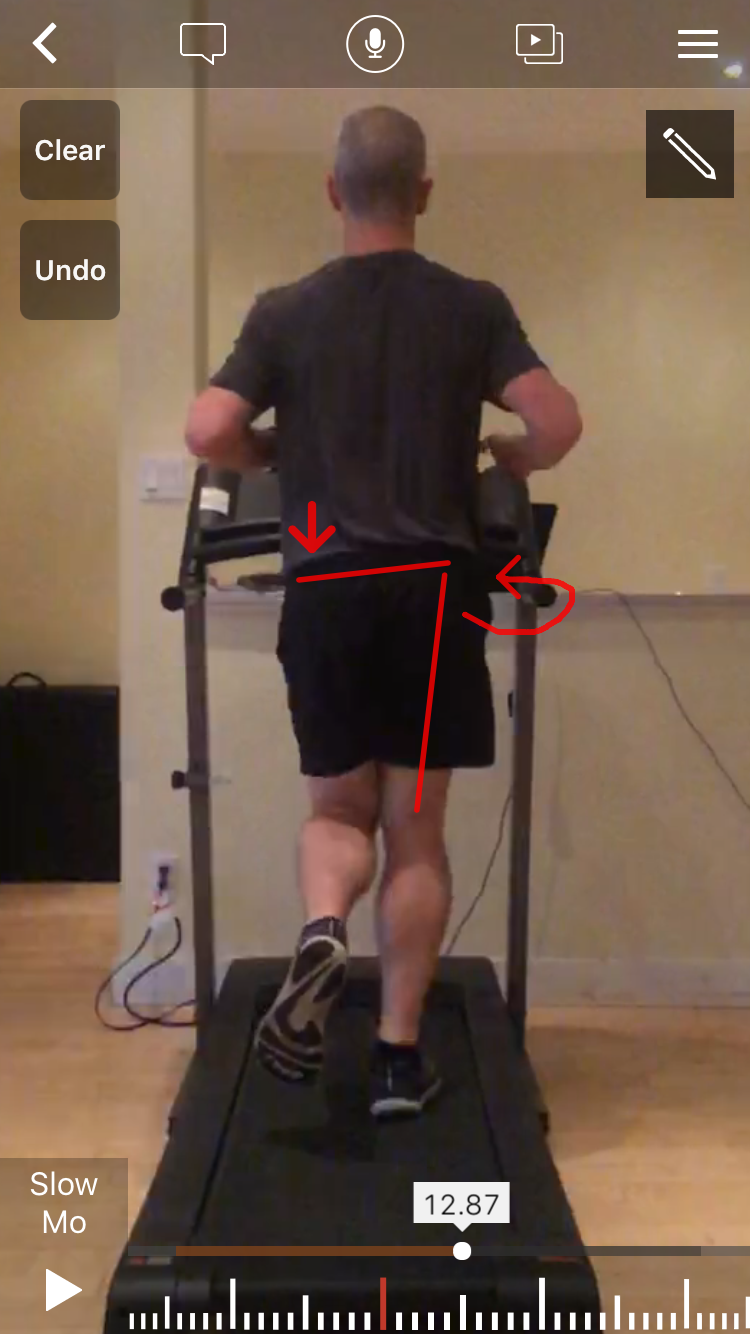
The curved arrow indicates the internal rotation of the femur (thigh bone). You can also see that the pelvis on the opposite side has dropped down a little, we call this contalateral hip drop and it is indicated by the arrow pointing down.
Conversely, optimal hip and pelvis control will see the femur only rotate inwards a little. The pelvis on the opposite side will stay level and the knees will not knock together.
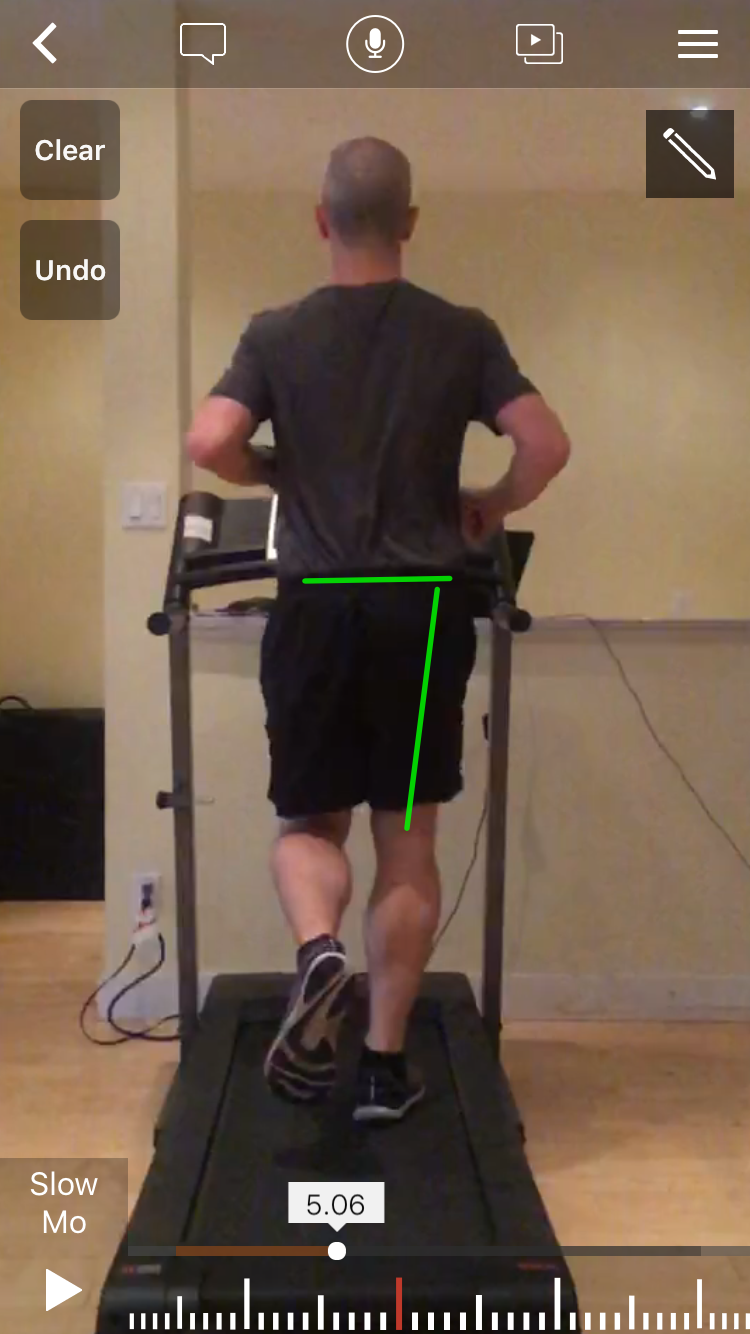
Is Knock Knees bad?
The trouble with this pattern of knock knees or dynamic knee valgus is that it increases joint loads at the patellofemoral joint (knee cap). This can increase the likelihood of someone developing patellofemoral pain syndrome (runner’s knee). So if the dynamic valgus is too pronounced, it’s best to try and correct it by working on running technique.
Related eBook
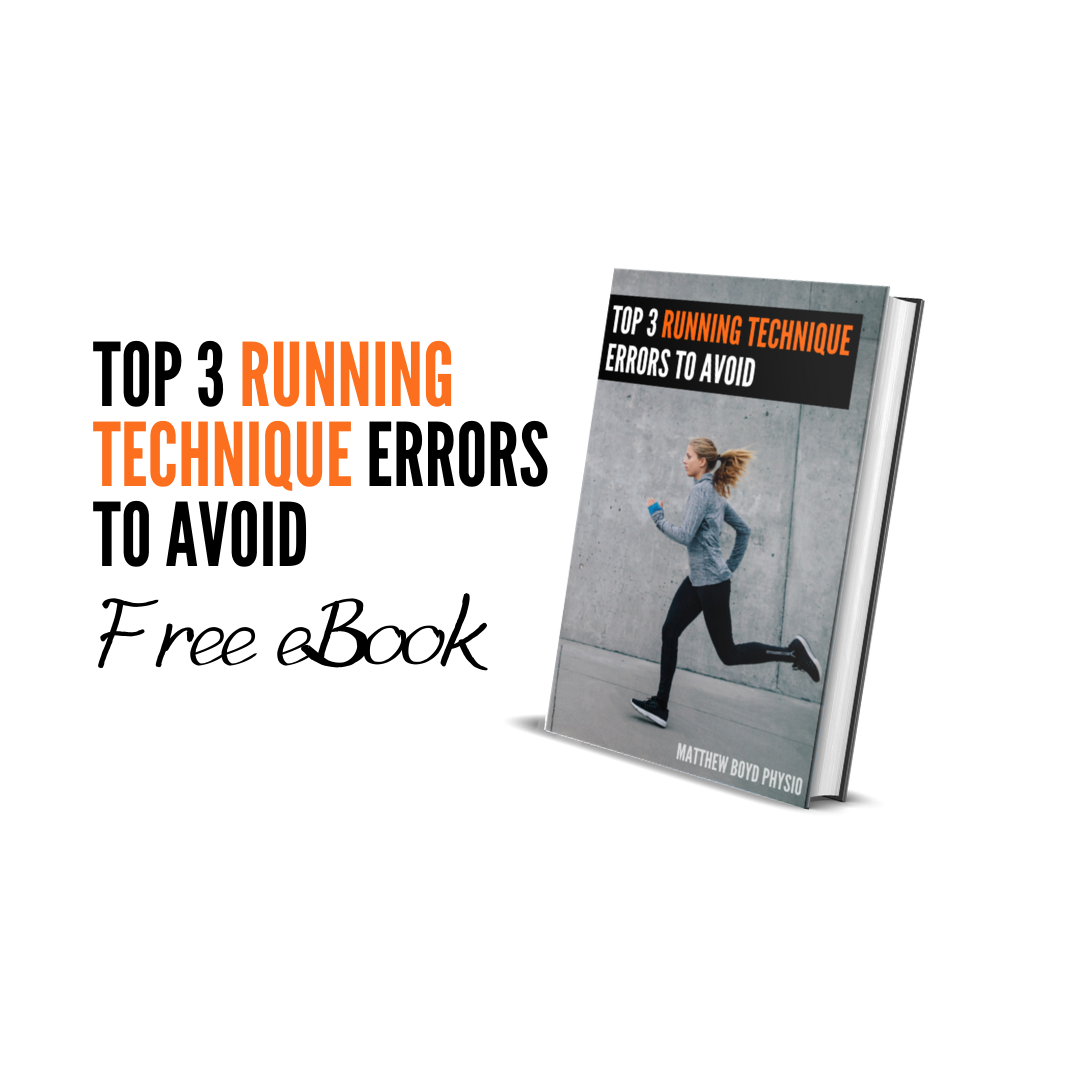
How do I know if I run with knock knees?
This is a tricky one to assess on yourself but a clue that you are running with knock knees (or too much dynamic valgus) is signs of wear on your running pants on the inside of the knee or bruising on the inside of your knees.
Another way to look at it is to film yourself running from behind. You can do this outside or on a treadmill and just use your phone. It is often easier if you use the Hudl technique app as you can then more through the video frame by frame.
You want to pause the video at the point of maximal loading. That is when your head is at it’s lowest point in the gait cycle and the time when the knees pass each other. If you are going into significant dynamic valgus, this will be the time when it is most pronounced.
Now you are looking for the knee window. The knee window is the amount of space between the two knees as one passes the other at the point of maximal loading.
We want to see an open knee window, meaning that there is some air/daylight visible between the knees as they pass each other. An open knee window indicates good hip/pelvis control.
A closed knee window however, is when the knees are contacting each other as they pass. There is no air/daylight visible between the knees, hence a closed knee window. A closed knee window indicates a suboptimal pattern of hip/pelvis control.
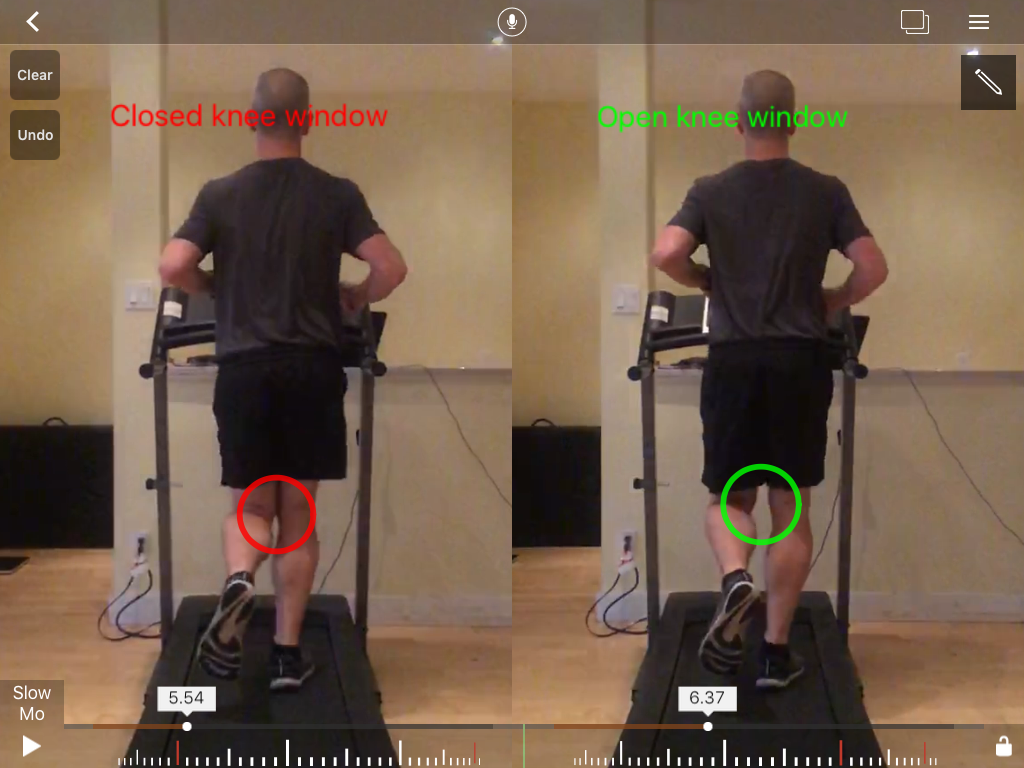
What should I do about it?
There are a couple of cues that work well to address this type of suboptimal running pattern. One is to think of “pushing the knees apart” as you run. The other is to get a small piece of duct tape or masking tape and put it on the outside of your knees. Then run on a treadmill in front of a mirror and try to move the pieces of tape further away from each other.
If either of these cues work well for you then remember to integrate the new technique slowly. This will give your tissues time to adapt to the new way of running. I suggest thinking of the cue for one minute of every five on your runs (or 1:5). Do that for a couple of weeks and if it feels ok go to 2:5. Do that for a couple of weeks then 3:5, and so on.